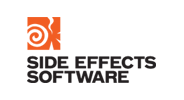
DGPis40:
Scientific Workshop & 40th Anniversary Reunion
Wednesday, May 28 - Friday, May 30, 2008
University of Toronto, Toronto, Ontario


Sponsors:
Session 3: HCI and Knowledge Media Design
Towards the Design of Electronic Cognitive Prostheses
Ronald M. Baecker [Website]
 |
Bell University Labs Chair in HCI Professor, Department of Computer Science Founder and Chief Scientist, Knowledge Media Design Institute University of Toronto |
Location:
Room 1160, Bahen Centre, 40 St. George Street, University of Toronto
Abstract:
Technological systems can function as cognitive prostheses. For example, cell phone and PDA software helps manage and access addresses, phone numbers, and appointments. The goal of our research is to envision, prototype, design, construct, and evaluate more powerful and flexible electronic cognitive aids. These should help people, including individuals who are aging and who have cognitive impairments, carry out activities of daily living; remember and use names, faces, and appointments; find objects of importance, such as glasses, wallets, and keys; understand and remember procedural instructions, such as taking medications; reminisce about meaningful aspects of their lives; and communicate with distant loved ones.
We motivate the work in terms of need and opportunity. Demographers forecast significant increases in the percentage of senior citizens and in the prevalence of cognitive impairments caused by afflictions such as Alzheimer's disease (AD). Information technology, and in particular advances in mobile, ubiquitous, and multimedia computing, allow us to create powerful new aids to cognition.
We shall develop a seven-dimensional framework for our research encompassing 1) the kind of cognitive function to be supported, such as aspects of memory or executive functioning; 2) the "disease" category for which it is intended, including AD, mild cognitive impairment (MCI), and normal aging; 3) the stakeholders for whom the system is intended, which may include caregivers and family members; 4) whether the user will work with the prosthesis by himself or with assistance; 5) the kind of technology to be used; and 6) the design process that is employed, such as user-centred design and participatory design. Of greatest importance is 7) whether the technology is intended to assist with diagnosis, or to act as a prosthesis, or to function as an aid to rehabilitation, or most ambitiously to serve as a mechanism for prevention, e.g., helping to delay cognitive decline.
We shall illustrate the framework by presenting projects done in collaboration with medical researchers and clinicians at Baycrest, Sunnybrook Health Sciences Center, and the Columbia University College of Physicians and Surgeons.
Bio:
Ronald Baecker is Professor of Computer Science, Bell University Laboratories Chair in Human-Computer Interaction, and founder and Chief Scientist of the Knowledge Media Design Institute at the University of Toronto. He is Affiliate Scientist with the Kunin-Lunenfeld Applied Research Unit of Baycrest, Adjunct Scientist at the Toronto Rehabilitation Institute, and was during the first half of 2006 on academic leave as Visiting Professor, Cognitive Neuroscience, Columbia University College of Physicians & Surgeons. Baecker is also Principal Investigator of the CDN$5.5M Canada-wide NSERC Network for Effective Collaboration Technologies through Advanced Research (NECTAR), has been named one of the 60 Pioneers of Computer Graphics by ACM SIGGRAPH, has been elected to the CHI (Computers and Human Interaction) Academy by ACM SIGCHI, and has been awarded the Canadian Human Computer Communications Society Achievement Award and the Leadership Award of Merit from the Ontario Research and Innovation Optical Network (ORION). He has published over 125 papers and articles, is author or co-author of four books and co-holder of 2 patents, and has founded and run two software companies. His current entrepreneurial venture is a virtual non-profit foundation within the University of Toronto to distribute and support the open source ePresence Interactive Media system (http://epresence.tv). His B.Sc., M.Sc., and Ph.D. are from M.I.T.
40 Years: Almost Enough Time to Make a Difference
Bill Buxton [Website]
 |
Principal Researcher Microsoft Research |
Location:
Room 1160, Bahen Centre, 40 St. George Street, University of Toronto
Abstract:
In these times of – largely technology induced – instant gratification, the length of time that it generally takes technologies to get to the mainstream is slightly ironic. The average time from invention to mainstream (defined as reaching a $billion industry) is typically over 20 years. This is something that I call "the Long Nose of Innovation". As just one example, the mouse, whose benefit was obvious from the start, took 30 years before it was standard on the desktop – with the release of Windows 95.
So, it is interesting to revisit some of what we were doing in the early days of DGP in light of this "long nose". Rather than nostalgia, however, the intent is an all too infrequent opportunity to take advantage of our past to inform our future. Among other things, the hope is to help us appropriately calibrate current expectations.
Bio:
Bill Buxton is the author of the new book, Sketching User Experiences: Getting the Design Right and the Right Design, published by Morgan Kaufmann.
Trained as a musician, Bill began using computers over thirty years ago in his art. This early experience, both in the studio and on stage, helped develop a deep appreciation of both the positive and negative aspects of technology. This increasingly drew him into both design and research, with a very strong emphasis on interaction and the human aspects of technology. He first came to prominence for his work at the University of Toronto on digital musical instruments and the novel interfaces that they employed. This work in the late 70s gained the attention of Xerox PARC, where Buxton participated in pioneering research in collaborative work, interaction techniques and ubiquitous computing. This work was carried on in parallel with his activities as Scientific Director of the Ontario Telepresence Project at the University of Toronto. In 1994, Buxton joined Alias Research (and in 1995 its parent company SGI, as well) where he had the opportunity to work with some of the top filmmakers and industrial designers in the world. He was Chief Scientist at Alias during the entire development of an animation package called Maya, which won an Academy Award for Scientific and Technical Achievement. He is now a principal researcher at Microsoft Corp., where he splits his time between research and helping make design a fundamental pillar of the corporate culture. In 2007, Buxton was named Doctor of Design, Honoris Causa, by the Ontario College of Art and Design.
Being Human in the Digital Age
Abigail Sellen [Website]
 |
Senior Researcher Microsoft Research Cambridge |
Location:
Room 1160, Bahen Centre, 40 St. George Street, University of Toronto
Abstract:
The field of Human-Computer Interaction (HCI) has come a long way since my days as a post-doc at DGP. But I will argue in this talk that it still has a long way to go. While we are recognizing that task-centric, old-fashioned models of people's behaviour with computers are much too narrow for understanding our relationship with technology in today's world, we have yet to move the field on adequately. Our definition of what a computer is has altered radically: they are increasingly embedded in our built environment, in the everyday artefacts around us, in our clothing, and even within our own bodies. The term "interaction" also no longer means what it used to: we often unwittingly or unwillingly engage with technologies, or at the other extreme, may be so engaged we alter the tools themselves. Finally, what it means to be a "user" needs to be examined more closely. Being human in relation to technology means all kinds of things, and by focussing on the long term value that people derive from computers opens up a much richer, more exciting set of possibilities for design.
Bio:
Abigail Sellen is a Senior Researcher at Microsoft Research Cambridge in the UK and co-manager of Socio-Digital Systems, an interdisciplinary group with a focus on the human perspective in computing. As a group Socio-Digital Systems is interested in simple technologies, and in learning from everyday life to inform the design of systems which are both useful and compelling.
Abigail joined Microsoft in June 2004 from Hewlett Packard Labs, Bristol. She spent 6 years at HP researching many different kinds of topics ranging from appliance design to web use to mobile technologies. Prior to HP, she spent 7 years at Xerox's research lab in Cambridge UK (EuroPARC), was cross-appointed to the MRC Applied Psychology Unit, Cambridge, and was a Research Fellow at Darwin College, Cambridge. Before moving to England, some of her most formative years were spent at DGP as a postdoc working with Bill Buxton, Ron Baecker and Marilyn Tremaine on the Telepresence Project and as a member of the Input Group.
Abigail has published on many topics including: computer input, help systems, reading, paper use in offices, videoconferencing design, and computer support for human memory. This includes two books, "Video-Mediated Communication" and "The Myth of the Paperless Office", which won an IEEE award for distinguished literary contribution to engineering. She holds 23 patents and was recently elected a Fellow of the British Computer Society.






